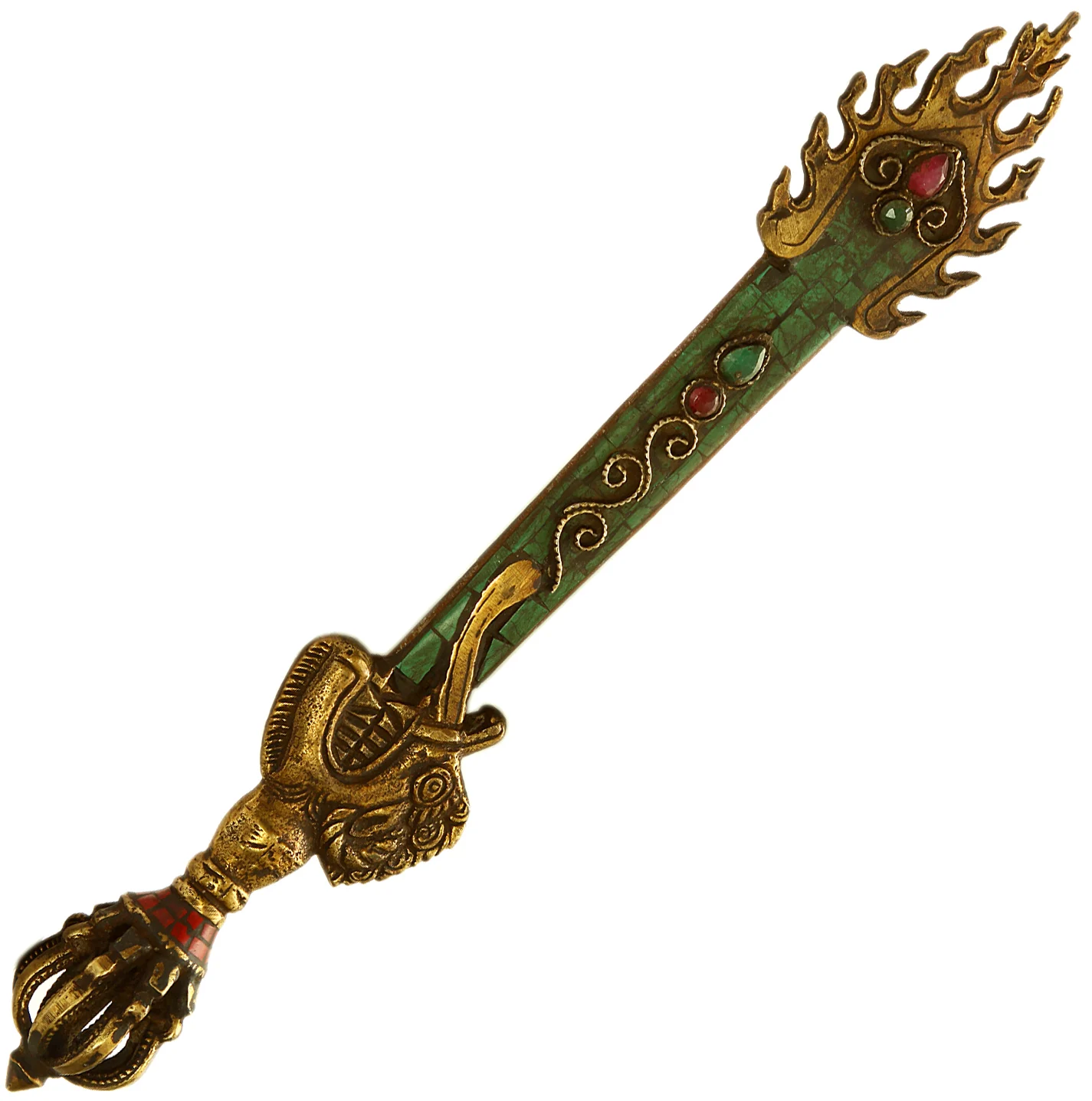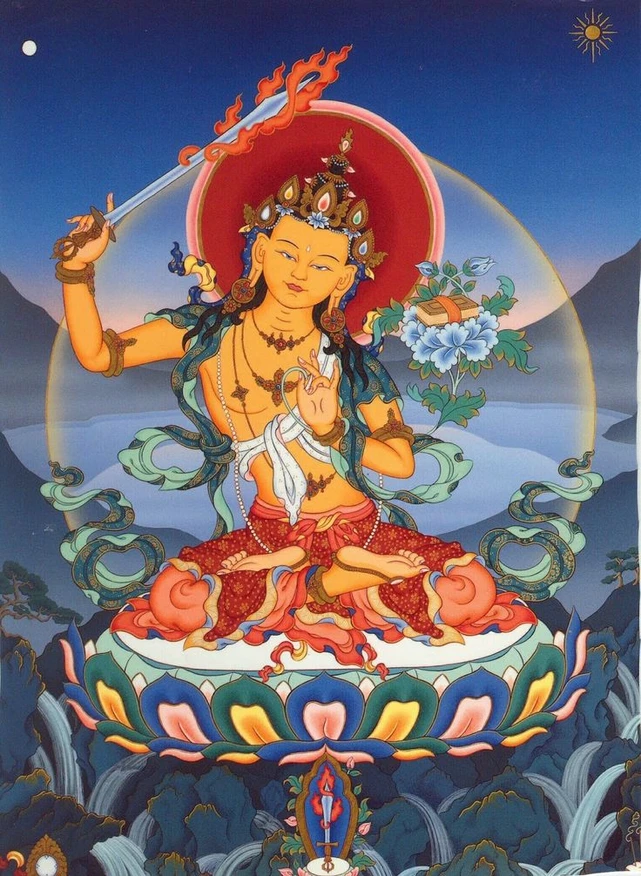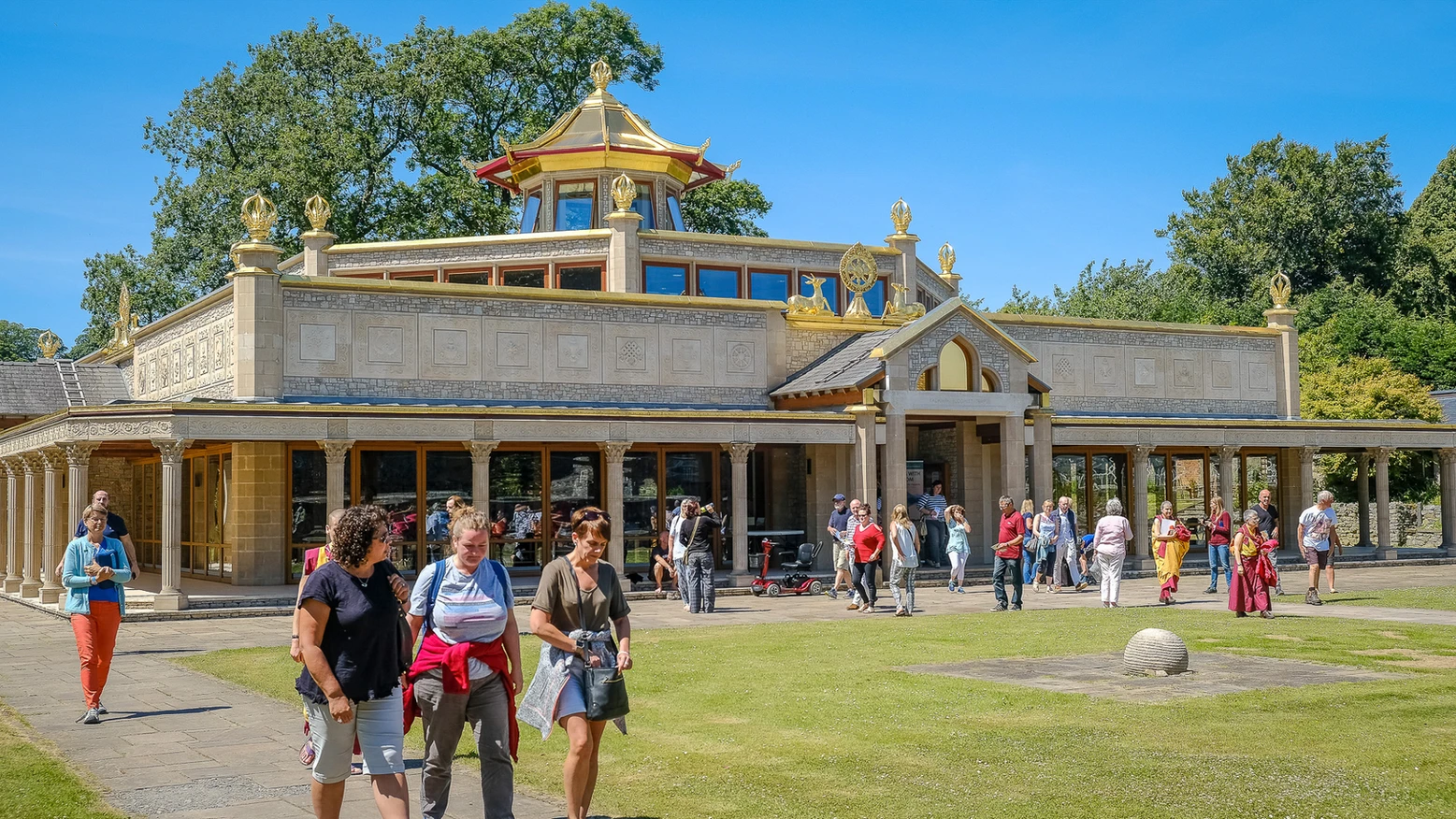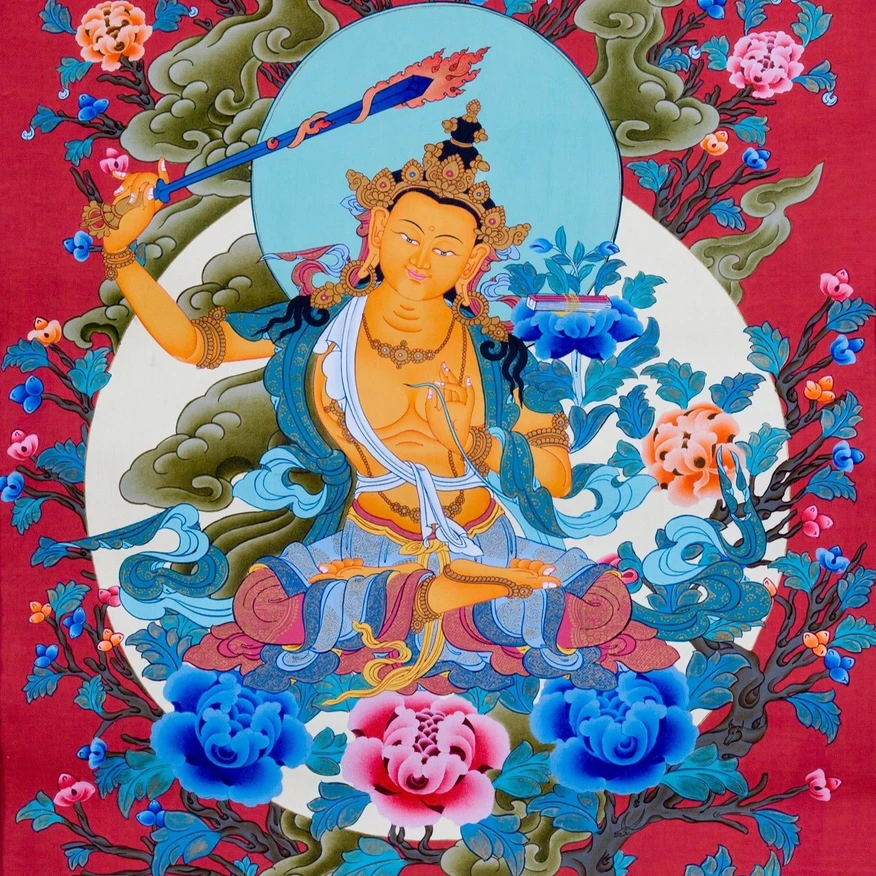In the rich tapestry of Buddhist iconography, Manjushri stands tall as the embodiment of wisdom and compassion. This Bodhisattva, revered in various Buddhist traditions, is often depicted wielding the majestic Manjushri sword—a symbol representing the sharpness of wisdom that cuts through the veil of ignorance.
Who is Manjushri?
Manjushri, a revered figure in Buddhism, is the Bodhisattva of Transcendent Wisdom. Bodhisattvas are enlightened beings who, out of compassion, choose to postpone their own Buddhahood to assist all sentient beings in their journey towards enlightenment.
Manjushri is associated with wisdom, insight, and the ability to cut through the darkness of ignorance. Often depicted wielding the Manjushri sword, a symbol of discernment, Manjushri embodies the essence of intellectual clarity and compassionate guidance.
Practice of Manjushri: Across Various Buddhist Traditions
The veneration of Manjushri is widespread across various Buddhist traditions, including Mahayana and Vajrayana. Devotees invoke Manjushri’s blessings through practices such as meditation, recitation of the Manjushri mantra, and rituals.
In Tibetan Buddhism, Manjushri holds a particularly significant place, and his images, thangkas, and statues are commonly found in monasteries and homes. The practice of Manjushri is not confined to a specific geographical location; instead, it spans diverse Buddhist communities globally, where individuals seek the wisdom and guidance embodied by this compassionate Bodhisattva.
Manjushri Sword: A Symbol of Transcendent Wisdom

The Manjushri sword, a celestial weapon wielded by the Bodhisattva of Transcendent Wisdom, transcends its physical form to become a profound symbol of discernment and illumination. Crafted with meticulous detail, the sword’s blade epitomizes the sharpness of wisdom, cutting through the shadows of ignorance. Its dual edges represent the complementary aspects of conventional and ultimate wisdom, encouraging practitioners to navigate the complexities of existence with balance and insight.
The hilt of the Manjushri sword, often adorned with lotus motifs or a dragon, serves as a handle of compassion. The lotus, emerging untarnished from murky waters, signifies purity and the potential for enlightenment amidst worldly challenges. The dragon, a symbol of power and protection, emphasizes the Bodhisattva’s commitment to guiding sentient beings on their path to wisdom. As practitioners contemplate the intricate details of the Manjushri sword, they are invited to internalize the symbolism, allowing the celestial weapon to become a spiritual tool—a reminder to cut through the veils of delusion and embrace the radiant clarity that leads to enlightenment.
Manjushri Thangka: Illuminating the Path to Wisdom

Among the diverse expressions of Buddhist art, the Manjushri thangka stands as a captivating tapestry of symbolism, offering a visual gateway to the teachings of the Bodhisattva of Transcendent Wisdom.
Manjushri is typically portrayed seated on a lotus throne, radiating compassion with a serene countenance. His right arm gracefully wields the Manjushri sword, symbolizing the cutting through of ignorance, while the left hand holds a scripture, often the Prajnaparamita Sutra, signifying the embodiment of wisdom.
The lotus beneath Manjushri’s seat signifies purity and enlightenment, emerging untarnished from the muddy waters of existence. The thangka serves as a meditation aid, inviting practitioners to contemplate the symbolism within, fostering a deep connection with the Bodhisattva’s teachings. The visual narrative woven into the Manjushri thangka becomes a guide on the spiritual journey, encouraging devotees to cultivate wisdom, compassion, and insight in their pursuit of enlightenment.
Manjushri Statue: A Physical Manifestation of Wisdom

The Manjushri statue, a divine representation of the Bodhisattva of Transcendent Wisdom, intricately weaves symbolism into its form, offering a visual narrative of enlightenment and compassion. Typically seated on a lotus throne, Manjushri’s serene countenance radiates compassion, while his arms gracefully hold symbolic attributes. The Manjushri sword, raised with precision, embodies the Bodhisattva’s sharp discernment, cutting through the veils of ignorance to reveal the path to enlightenment.
Adorned with regal attire and a crown, the statue signifies Manjushri’s spiritual eminence among Bodhisattvas. Devotees find solace in contemplating the Manjushri statue, inviting the Bodhisattva’s transformative presence into their lives. Each nuanced detail, from the gentle gaze to the symbolic gestures, becomes a conduit for practitioners to connect with the wisdom and compassion that Manjushri embodies, inspiring them on their journey towards enlightenment.
Manjushri Mantra: Invoking the Power of Wisdom

The Manjushri Mantra is a sacred mantra associated with Manjushri, and chanted to invoke the blessings of the Bodhisattva. The Manjushri Mantra is a powerful tool for cutting through ignorance and gaining clarity on the path to enlightenment.
The Manjushri Mantra is as follows:
“Om A Ra Pa Ca Na Dhih”
Now, let’s break down the mantra and explore its meaning:
- Om (ཨོཾ): This is a sacred syllable representing the universal essence or the ultimate reality.
- A Ra Pa Ca (ཨ ར པ ཅ): These syllables are associated with the purification of the six realms in the cycle of existence (Samsara). Each syllable corresponds to a realm: A for Deva (gods), Ra for Asura (demigods), Pa for Human, Ca for Animal, Na for Hungry Ghost, and Dhih for Hell.
- Na (ན): This syllable represents the path of the Mahayana, emphasizing compassion and the aspiration to attain Buddhahood for the benefit of all sentient beings.
- Dhih (དྷི): This syllable represents wisdom, insight, and the intelligence needed to navigate the path of enlightenment. It is particularly associated with Manjushri.
The Manjushri Mantra, when chanted with sincerity and devotion, is believed to purify the mind, dispel ignorance, and awaken the innate wisdom within the practitioner. It is a mantra of empowerment, aligning individuals with the enlightened qualities of Manjushri, who is revered for his ability to cut through the veil of delusion and illuminate the path to liberation.
Practitioners often incorporate the chanting of the Manjushri Mantra into their meditation or daily practice, seeking the blessings of Manjushri to guide them on their spiritual journey and deepen their understanding of the nature of reality.
Manjushri Dharma Centers: Community for Spiritual Growth

Dharma centers dedicated to Manjushri play a crucial role in nurturing wisdom and compassion.
Manjushri Dharma Center – Learn more here
Manjushri Kadampa Meditation Center – Learn more here
Manjushri Retreat Center – Learn more here




